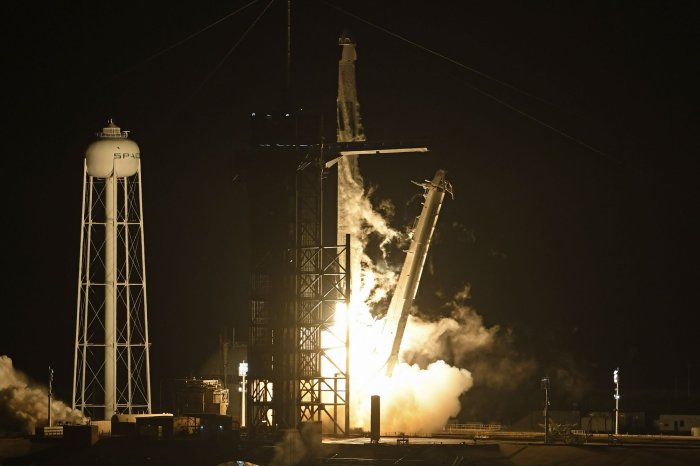1 of 4 | NASA this week detailed its plans to deorbit the International Space Station and crash it into the Pacific Ocean in 2031. Photo courtesy of NASA/UPI |
License Photo
Feb. 1 (UPI) -- NASA has released details of the International Space Station's transition plan, including destruction of the structure in 2031, and research goals for the interim and the future.
The ISS will deorbit in January 2031 before crashing into an uninhabited area of the South Pacific Ocean near Point Nemo, which has been called a "spacecraft cemetery," according to the updated plan that NASA released Monday.
In the interim, the 925,335-pound space laboratory will continue operating until 2030 under a commitment the Biden administration has made, which NASA Administrator Bill Nelson announced last month.
"The International Space Station is a beacon of peaceful international scientific collaboration and for more than 20 years has returned enormous scientific, educational and technological developments to benefit humanity," Nelson said in a NASA blog at the time.
"The United States' continued participation on the ISS will enhance innovation and competitiveness, as well as advance the research and technology necessary to send the first woman and first person of color to the moon ... and pave the way for sending the first humans to Mars."
Extension of operation through 2030 will allow for a "seamless transition of capabilities in low-Earth orbit to one or more commercially owned and operated destinations in the late 2020s," according to the NASA blog.
The updated transition report highlights five goals in the interim, including enabling deep space exploration, conducting research to benefit humanity, fostering a U.S. commercial space industry, leading and enabling international collaboration and inspiring humankind.
"By the early 2030s, NASA plans to purchase crew time for at least two -- and possibly more -- NASA crewmembers per year aboard commercial CLDs [Commercial low-Earth orbit Destinations] to continue basic microgravity research, applied biomedical research, and ongoing exploration technology development and human research, informed by the first several Artemis lunar landings," the report said.
"After the end of ISS, NASA plans to continue to provide support for research in LEO based on the successes and lessons learned of the ISS National Laboratory," it said.
In December, NASA announced it has signed deals with three U.S. companies to develop designs of new space stations and other commercial destinations in space, including Blue Origin, of Washington state, for $130 million, Nanoracks, of Houston, for $160 million, and Northrop Gunman Systems, of Virginia, for $125.6 million.
A video clip from NASA focuses on ISS's achievements since its inception in 1998.
"The ISS has been an unparalleled laboratory for cutting-edge research unachievable on earth's gravity for the benefit of all humanity, an observatory for earth's evolving climate, a beacon for international collaboration and our home until 2030," the video said.
The station is "busier than ever" in its third decade, developing technology for exploration missions, and researching new ways to fight disease, according to the video.
The SpaceX Falcon 9 rocket launches NASA's third crew to the International Space Station at 9:03 p.m. November 10 from the Kennedy Space Center in Florida. Photo by Joe Marino/UPI |
License Photo
















